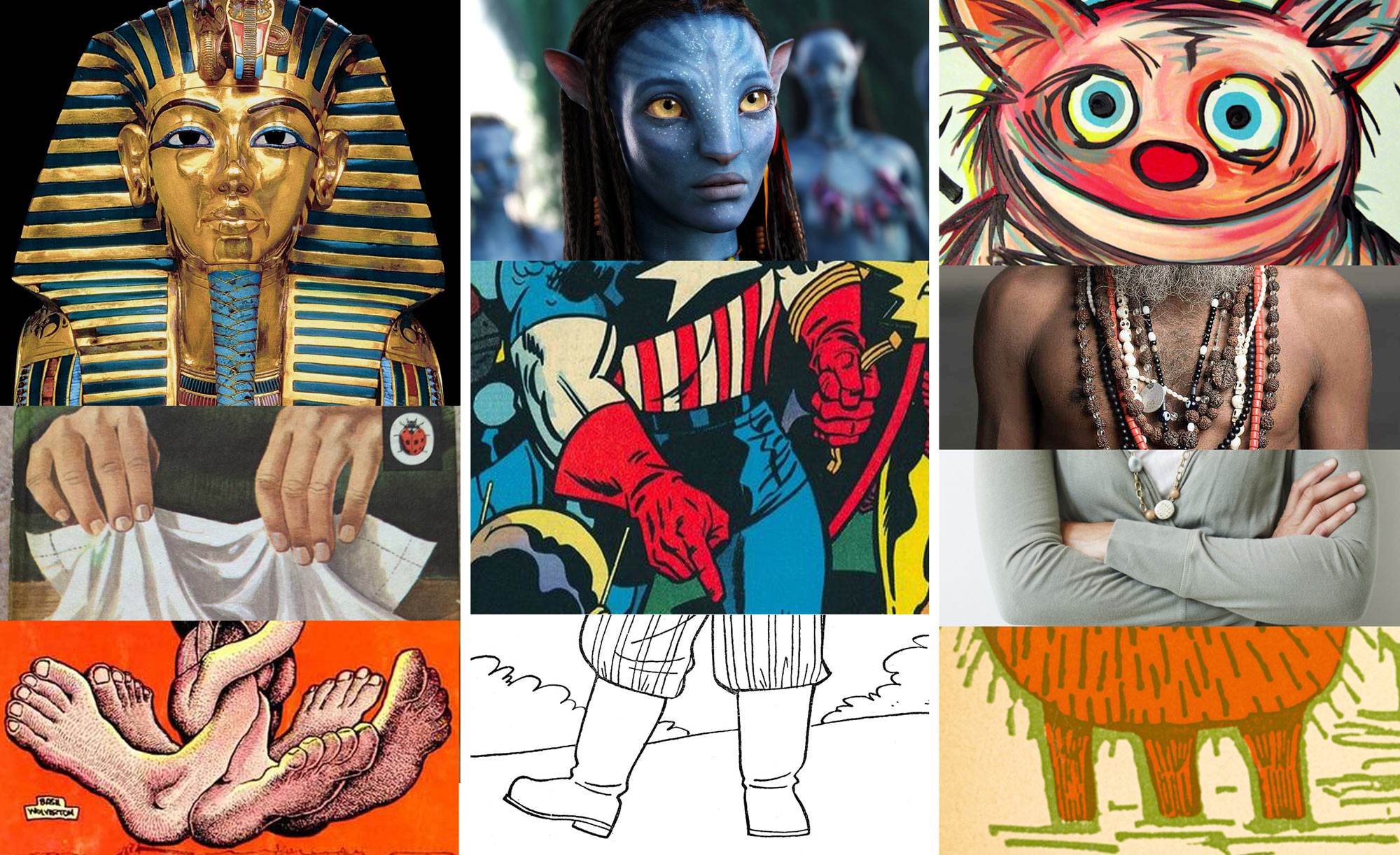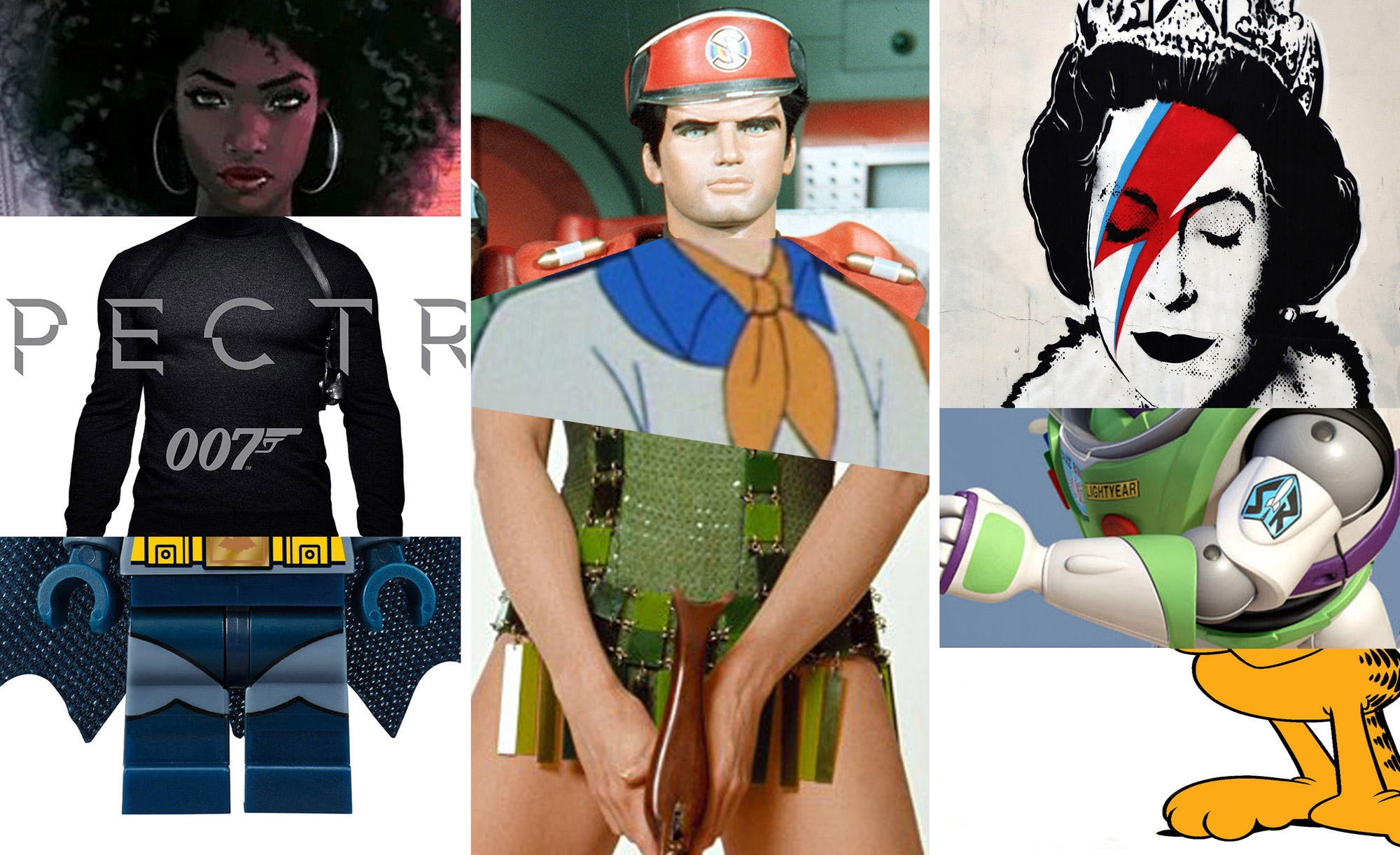Where do creative ideas come from?

What’s the difference between a creative person and a non-creative person?
This isn’t the opener for a self-indulgent joke, but a question that’s been nagging me for a while now.
I’ve worked with hundreds of creatives over the years and there is definitely something a bit ‘special’ about them. Over the course of their careers, creative problem solvers, be they copywriters, art directors or designers have to magically pull tens of thousands of creative ideas out of the hat. For ‘non-creative’ people, that would be a mind-boggling, and frankly, impossible task.
So where do creative ideas come from?
One theory that I personally subscribe to, is that there is nothing new in the universe. Everything is a manifestation of what was already there. Whether we like it or not, we are all rediscovering and recycling. It’s not a case of inventing, but re-inventing.
According to Christopher Booker, there are only seven basic plots or themes that are recycled in movies and novels:
1. Overcoming the Monster
2. Rags to Riches
3. The Quest
4. Voyage and Return
5. Rebirth
6. Comedy
7. Tragedy.
Others expand on this list, but whatever the number, academics pretty much agree that every story ever told has been retold over and over in slightly different ways.
The same goes for jokes. After researching 20,000 rib ticklers; theorist, Alastair Clarke, concludes that there are only eight joke structures in the whole world:
1. Positive Repetition e.g. a catchphrase
2. Scale – such as oversized features on caricatures
3. Qualification – a familiar word said in an unfamiliar way
4. Qualitative Recontextualisation – when something familiar is changed
5. Application – when words have a double meaning
6. Completion – the audience has to imagine the end of the joke
7. Division – a joke is broken up and told by different people
8. Opposition – irony and sarcasm.
So if there really is nothing new under the sun, why does an idea come along every now and again that seems to shake things up? Well, just because there is nothing new as such, there are infinite ways of combining the universe of things that is already out there. William Boeing copied the Wright Brothers – who copied Joseph-Michael and Jacques-Ètienne Montgolfier – who copied Leonardo da Vinci – who copied the birds (not sure who the birds copied). At each stage, it may have seemed like a massive innovation, but really, each invention was a borrowed and re-engineered version of what had gone before.
13 million minutes worth of input
At this moment in time, I reckon I’ve been alive and conscious of my surroundings for at least 13 million minutes. How many words, pictures, stories, jokes, magical moments… have I been exposed to during this time? How many combinations of this data could I come up with?
There are 118 chemical elements, 26 letters in the English alphabet, approximately 10,000,000 colours (in the spectrum that we can see) and 1,831 types of cheese on cheese.com alone.
And that’s not including shapes, words, textures or savoury crackers!
The point being, there is no end to the influences that shape our thinking
So here’s the conclusion I’ve come to about creative people and their ability to come up with creative ideas. They are basically the same as everyone else, but they are spongier. They soak up everything they come into contact with and they have an innate ability to create ‘new’ ideas by filtering and mixing everything in their memory banks. Ideas don’t just appear from nowhere, they are constructed by combining memories.
So to generate creative ideas, all I have to do is juggle things around that already exist and Bob’s your Uncle:

Or how about…

Of course, it’s not quite so simple when you have to answer a real-world creative brief, but the principal remains the same. Creative people absorb more information and have a knack for spewing it back out in a way that makes their ideas compelling/convincing/attention-grabbing.
What else does it take to have creative ideas?
By my reckoning, there are a handful of qualities that any good creative person needs. Not all of them can be taught, but they can be nurtured and encouraged to blossom by keeping inspiring company and through discipline.
A love for it – If you don’t love what you’re doing, it shows in the work. There’s a great solution to even the most seemingly dull creative brief. Whether or not the client will buy it is another thing.
Curiosity – everything is fascinating once you start to scratch the surface. You don’t have to be an expert in anything, but the more stuff you expose yourself to, the greater the mental library you can draw on.
Child-like enthusiasm – it can be tough coming up with idea after idea. Every day, as much as possible, needs to be approached with a hop, skip and a smile. Creative people find the fun in what they do – ideas die on treadmills.
Perseverance – sometimes your first idea is the best one, but more often than not, it’s the one that you haven’t unearthed yet that’s the real killer idea. If the deadline allows it, great creatives keep sniffing around for something even better.
Openness – remember the kid at school who hid his work so no one could copy it? Don’t be that kid. Ideas love being bounced around. The best creatives aren’t scared to share them. For every idea that I’ve ‘had’, there are at least 2 or 3 that have morphed and been polished by sharing them with colleagues, family and friends.
A very, very thick skin – ideas are our babies and people are queuing up to tell us just how ugly they are. No matter how much we become attached to them, we need to be prepared to sacrifice our beloved creative ideas for something that the client is happier with.
Courage – “Yes, it’s a bit bonkers, and yes it’s not exactly on brief as such, and you’re right, no one else in the sector is doing it, but it just feels right.” Sometimes you’re going to have to fight to get an idea through. It takes guts to stand up and champion something that no one else immediately understands.
The ability to detach – no one liked your ideas and they’ve run with a boring old cliché. Now is not the time to shuffle off into a corner for a sulk. If we cling on to every great idea that is rejected, then sooner or later we become bitter and deluded (and often end up in rehab). You fought for it, you lost; now move on, there’s thousands more ideas where that came from.
The other quality that separates really creative people from the ‘normals’ is the ability to have creative idea after creative idea. When the deadline is looming, writer’s block won’t cut it as an excuse.
This, of course, is just my opinion. Creative ideas may actually be born under the gooseberry bush or be delivered by pixies, but I’m sticking with the above. Either way, I’ll leave you with this rather jolly quote from John Steinbeck:
You can drop me a line here, or email jonathan@sowhatif.co.uk